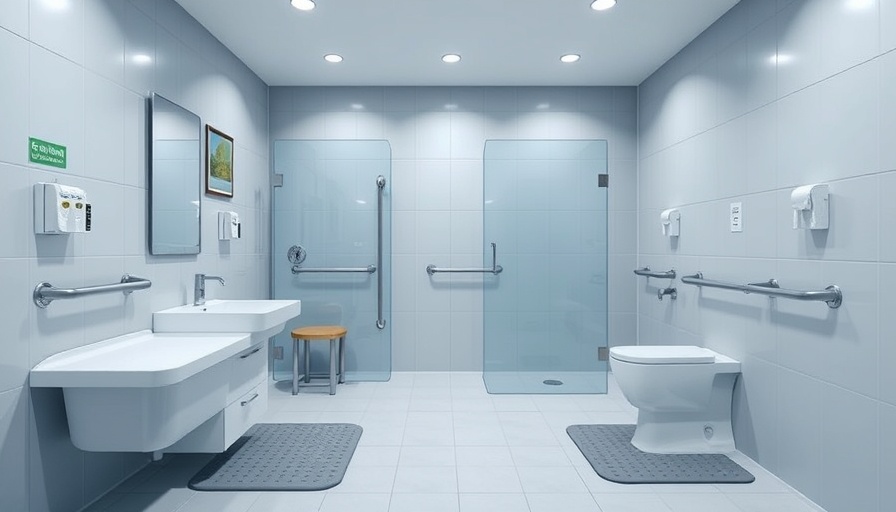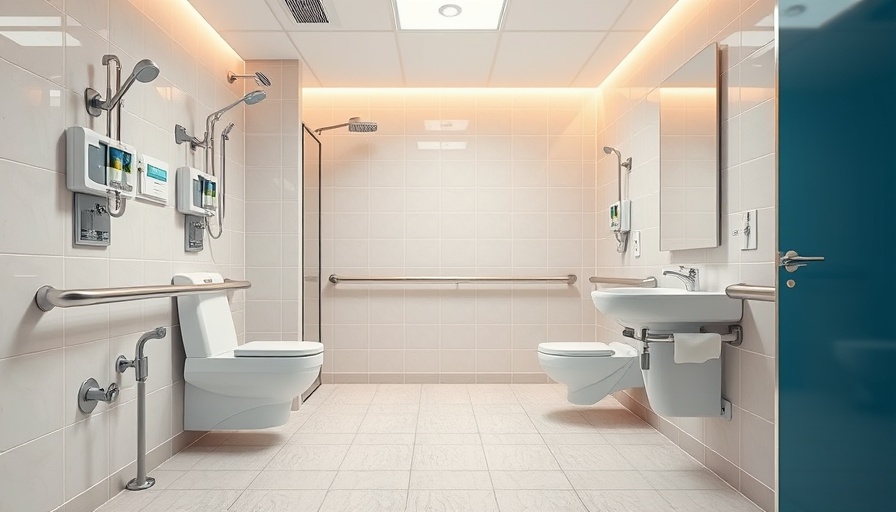
Why Bathroom Safety Is Crucial for Seniors
As we age, maintaining independence while ensuring safety becomes a delicate balance. Bathrooms, often one of the most dangerous rooms in a home, pose unique challenges. The risk of slips, falls, and other accidents increases significantly for seniors, making bathroom safety paramount. A carefully designed bathroom equipped with essential features can provide peace of mind, not only for elderly individuals but also for their caregivers. This article will explore indispensable safety features that enhance the accessibility and functionality of bathrooms for seniors.
Essential Grab Bars: A Lifeline
The installation of grab bars is among the most crucial safety modifications one can make in a senior-friendly bathroom. These sturdy handrails offer reliable support when entering or exiting the shower or bathtub. Typically placed near toilets, showers, and bathtubs, grab bars must be installed at a height that is comfortably accessible to seniors, ensuring they can utilize them effectively.
It’s essential to select high-quality grab bars, preferably made from durable materials like stainless steel, which can support considerable weight. Professional installation is highly recommended to optimize placement based on individual needs. By installing grab bars, we not only decrease the likelihood of falls but also empower seniors to maintain their independence during daily tasks.
Non-Slip Flooring: Safety Underfoot
Beyond grab bars, the choice of flooring can dramatically impact safety in the bathroom. Traditional smooth surfaces like tiles and hardwoods can amplify the risk of slipping, especially when wet. This is where the importance of non-slip flooring comes into play. Materials such as textured vinyl, cork, or rubber provide superior grip underfoot, reducing the chances of falls significantly.
Additionally, consider eliminating area rugs, which can become tripping hazards. If rugs are used for comfort, opt for those with non-slip backing and secure placement. Prioritizing safety and accessibility over visual appeal is essential in creating a safer bathroom environment for seniors.
Walk-In Showers: The Future of Bathing Safety
For seniors with limited mobility, walk-in showers can be a game changer. Unlike traditional bathtubs, these showers are level with the floor, often featuring low thresholds that eliminate the risk of tripping. Equipped with built-in seating and handheld showerheads, they provide a safer and more comfortable bathing experience.
These showers not only improve safety but also enhance the overall bathroom aesthetic. Many models come with anti-slip tiles and even integrated grab bars, making them a comprehensive solution for caregivers concerned about their loved ones’ well-being. Walk-in showers empower seniors to maintain autonomy in their bathing routines, significantly enhancing their quality of life.
Advancing Toilet Safety: The Unsung Hero
While often overlooked, toilet safety is equally crucial. Modified toilet heights can ease accessibility, allowing seniors to sit down and rise with greater ease. Additionally, toilet safety frames can be installed to provide extra support, preventing falls during crucial moments. Such adaptations are simple to implement and can dramatically improve a senior’s bathing experience.
Incorporating features like raised toilets and support mechanisms can significantly alleviate the physical strain faced by seniors. Understanding the importance of these elements can actively reduce the risk of accidents and enhance comfort for the elderly.
Harnessing Technology for Bathroom Safety
While physical modifications are essential, technology can also play a vital role in ensuring bathroom safety for seniors. Smart home technologies such as alerts for when someone may have fallen or systems that enable remote monitoring can provide peace of mind for caregivers. Moreover, having access to medical alert systems that seniors can use in case of an emergency builds a safety net, ensuring they can receive immediate help if necessary.
Implementing smart systems requires thoughtful planning and consideration; seniors should feel comfortable with the technology being employed. Technological advancements tailored for safety create an environment where independence is fostered while still keeping vulnerabilities in check.
Final Thoughts: The Path to Enhanced Bathroom Safety
Creating an accessible and safe bathroom for seniors is not merely an option but a necessity. With the right adaptations, we can empower older adults to maintain their independence while minimizing hazards. The evolution of bathroom safety features—from grab bars to walk-in showers and innovative technologies—offers a comprehensive approach to safeguarding the well-being of our seniors.
Ensuring bathroom safety can foster peace of mind for both seniors and their caregivers. If you're considering home modifications to enhance safety for a loved one, begin by assessing the bathroom space and exploring the various features discussed. Empowering seniors to feel secure in their homes starts with us.
Take Action Today: Explore ways to make your loved one's bathroom safer and more accessible!
 Add Row
Add Row  Add
Add 




Write A Comment